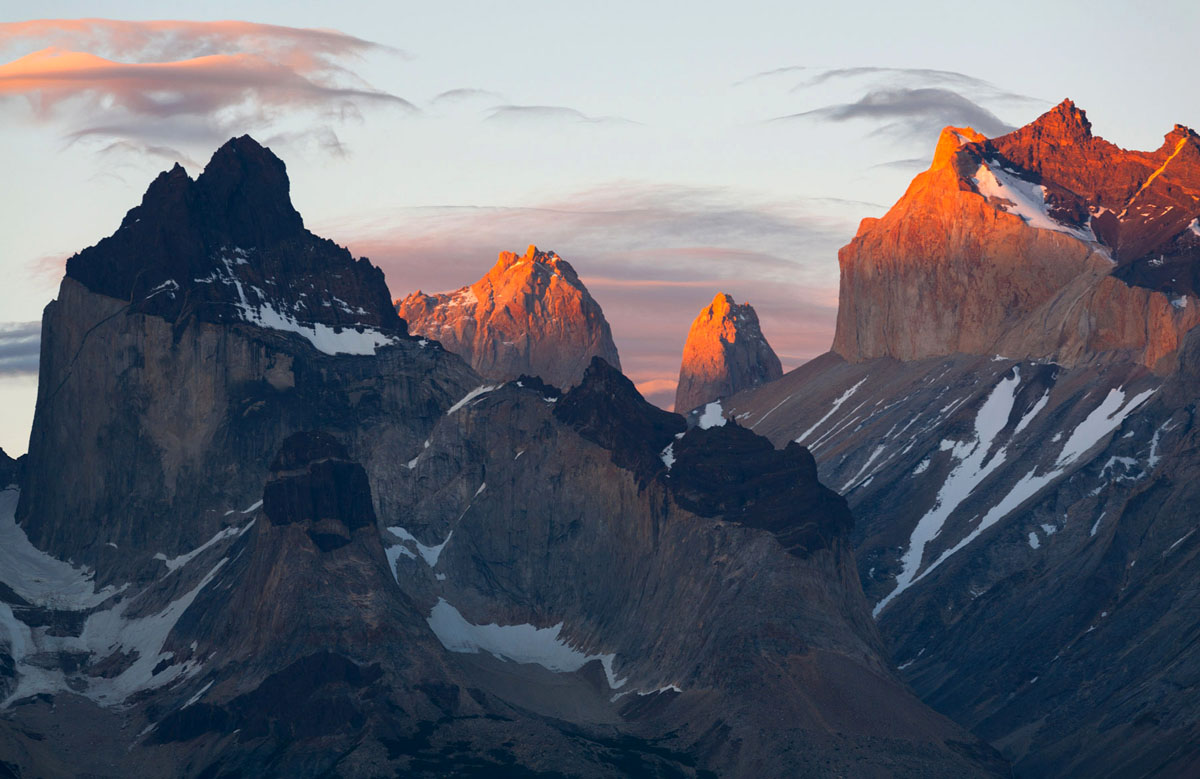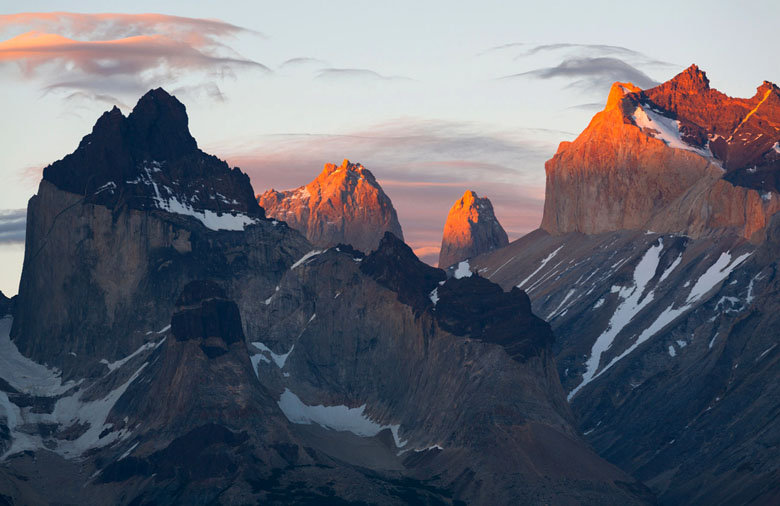



Location: Chilean Patagonia, approximately 2,000 kilometers south of Santiago
Getting to Torres del Paine: Punta Arenas (PUQ) is the nearest airport, five hours south of Torres del Paine by ground transportation
Best Day Hike: Base del Los Torres (7–9 hours)
“W” Circuit: 4–6 days
“O” Circuit: 6–10 days
Where to Stay: From luxury lodges to refugios and camping
Torres del Paine (pronounced PIE-nay) National Park in southern Chile is the crown jewel of Patagonia. Rising high is the Cordillera del Paine, one of the world’s most dramatic mountain ranges, including the famed rock formations of the Torres (Towers) del Paine and Cuernos (Horns) del Paine. The massive Southern Patagonia Ice Field and Glacier Grey line the western portion of the park, feeding the turquoise lakes Grey, Pehoé, Nordenskjold, and Sarmiento. Guanacos roam the rolling hills and giant condors are often spotted circling above.
Torres del Paine is a popular destination and the park truly caters to all types of travelers and adventure seekers. A new breed of sleek luxury accommodations has sprung up in Puerto Natales and other locations near the park. The buildings are tasteful and modern, allowing for a first-rate nature experience without the need to rough it. For those on a budget, hostels abound and many campgrounds are free.
For trekkers, Torres del Paine is a lifetime trip. The “W” Circuit (4–6 days) is a shorter version of the “O” Circuit (6–10 days) that makes its way around the entirety of the Cordillera. The “W” passes through the heart of the mountains with easy access to refugios—large cabins with accommodations, food, and other infrastructure. The “O” is the full loop—the “W” plus the more remote backside that gets fewer trekkers.
In addition to overnight treks, Torres del Paine has a range of excellent day trips. The premier viewpoint in the park, Base de los Torres, is accessible via a full-day hiking trip (7–9 hours return from Hosteria Las Torres). A shorter walk to an excellent panorama is Mirador Cuernos (2 hours return from Guaradria Pudeto). For those interested in a scenic boat ride, a 3-hour circumnavigation of Lago Grey departs from Hotel Lago Grey. Most accommodations offer day trips into the park.
You can download the official Torres del Paine trekking map here. The “W” Circuit stretches from Refugio Grey to Campamento Torres with the Valle de Frances in the middle. The “O” Circuit circles the entirety of the Cordillera del Paine without doubling back. Most people start and finish at the Laguna Amarga ranger station or Refugio Lago Pehoe. Both circuits can be walked in either direction; for the "O" counterclockwise is most common.